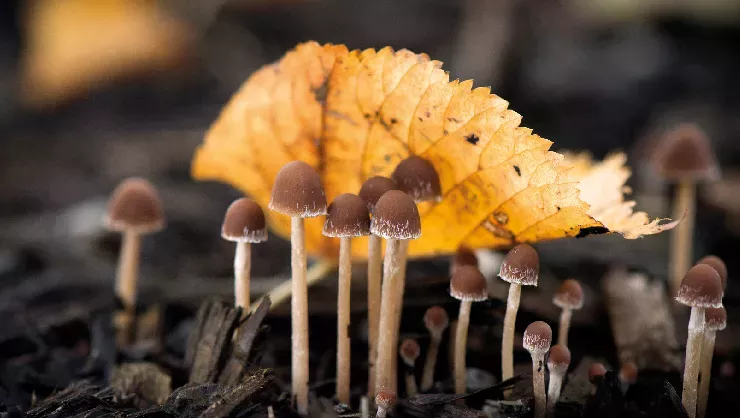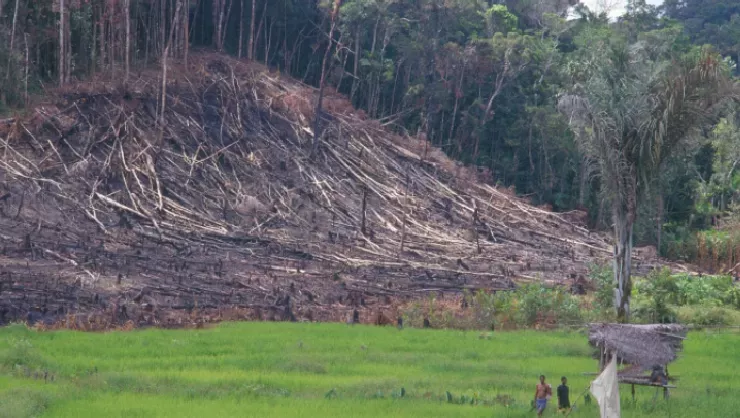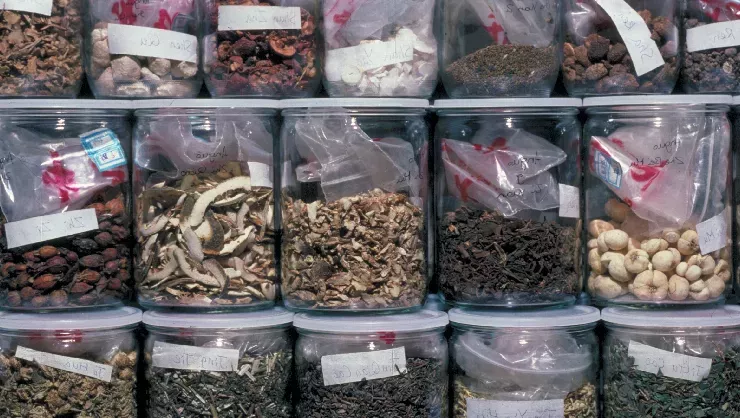KS2 Battlefield botany
Challenge overview
Pupils will design a proposal for a neglected or devastated area to be transformed by plants.
Learning outcomes
-
Describe the requirements of plants for life and growth
-
Explore an aspect of British history and its relevance to our lives today
-
Understand how plants can transform landscapes, and what the benefits of this can be
-
Discover how plants became a symbol of remembrance after WW1
Key vocabulary
Plants, growth, biodiversity, ecosystem, interdependence, pollination, remembrance, community, WW1
Background information
During WW1, Kew’s Assistant Director, Arthur Hill, worked with the War Commission to recommend what should be planted on war graves on the Somme battlefields in France. Plants were used to help transform these battlefield cemeteries into tranquil places for reflection and remembrance.
Today, projects such as the Great Green Wall use plants to bring life back to a degraded landscape.
From gardening competitions in refugee camps, to remembrance or memorial gardens, plants can be a symbol of hope and regrowth in times of conflict and change.
Did you know?
The Great Green Wall is an epic movement to grow an 8,000km natural wonder of the world across the entire width of Africa. The Great Green Wall will be the largest living structure on the planet, three times the size of the Great Barrier Reef (Great Green Wall, 2019).

Wow fact
In 1918 the Royal Horticultural Society sent seeds to be used for gardening competitions to British prisoners of war in Germany. 100 years on, the RHS has now delivered seeds for garden competitions to Syrian refugees in camps in Iraq.
Curriculum links
Plants
- Explore the requirements of plants for life and growth (air, light, water, nutrients from soil, and room to grow) and how they vary from plant to plant
Living things and their habitats
- Recognise that environments can change and that this can sometimes pose dangers to living things
Working scientifically
- Using straightforward scientific evidence to answer questions or to support their findings.
- Identifying scientific evidence that has been used to support or refute ideas or arguments
A study of an aspect or theme in British history that extends pupils’ chronological knowledge beyond 1066
Geographical skills and fieldwork
- Use maps, atlases, globes and digital/computer mapping to locate countries and describe features studied
- Use the eight points of a compass, four and six-figure grid references, symbols and key (including the use of Ordnance Survey maps) to build their knowledge of the United Kingdom and the wider world
Retrieve, record and present information from non-fiction
To improve their mastery of art and design techniques, including drawing, painting and sculpture with a range of materials [for example, pencil, charcoal, paint, clay]
Design
- Use research and develop design criteria to inform the design of innovative, functional, appealing products that are fit for purpose, aimed at particular individuals or groups
Cooking and nutrition
- Understand seasonality, and know where and how a variety of ingredients are grown, reared, caught and processed
Knowledge, skills and understanding
- To talk and write about their opinions, and explain their views, on issues that affect themselves and society
How to run the challenge
Part 1: Challenge preparation (1 hour)
We recommend this is completed in class with the teacher.
-
Introduce the challenge to your class by playing the short clip in the overview. All of the other tools needed for the challenge are in the 'Resources' section below
-
Use the thinking card to check pupils’ prior knowledge and misconceptions of the topic
-
Play the Battlefield botany ‘Watch and learn’ video with your class
-
Invite pupils to match the project with its description with the card matching activity
-
Assess your pupil's learning with the quiz
Part 2: The challenge (1-2 hours)
Pupils can complete the challenge alone or in groups, and either in class or as a homework activity.
Kew’s Endeavour challenges are open-ended to encourage pupils to design and carry out their own investigations. For KS2 Battlefield botany, pupils must design a proposal for a neglected or devastated area to be transformed by plants. This could be an area which is personal to them, an area important to your community, or an area in another part of the country or world.
Just like Sir Arthur Hill, their work could end up being a legacy for people in the future.
Pupils will need to:
-
Research Sir Arthur Hill and the creating and planting of war cemeteries in the First World War
-
Research how plants have been and/or are being used to create, restore or preserve landscapes
-
Choose and give details, including location, of an area to transform. The area could be local, national, global or personal to them
-
Decide which plants they will use and why
-
Consider how people will interact with or be involved in the landscape or area
-
Consider what the benefits of transforming this area will be. This could be for wildlife, communities, individuals, the government etc.
Resources
KS2 Battlefield botany thinking card
What do your pupils think about plants in community spaces?

KS2 Battlefield botany watch and learn
Introduce your pupils to WW1 and plants for remembrance and restoration with this ‘Watch

KS2 Battlefield botany card match
Invite pupils to match the project with its description with this card matching activity.

KS2 Battlefield botany quiz
Test your pupils' knowledge on plants and restoration with this quiz.

Career skills
Endeavour promotes the acquisition of Science Capital, helping your pupils to have a better understanding of science and its relevance in their lives. By taking this challenge your pupils will be using the skills of a landscape architect.
What does a landscape architect do?
A landscape architect designs, creates and manages spaces in the natural or built environment. These areas are often spaces for people to enjoy or use, such as memorials, sports grounds, burial grounds, recreation areas. Part of the job of a landscape architect is to ensure that landscapes are managed in a sustainable way. Landscape architects can develop conservation areas and promote environmental awareness.
Skills:
-
Design and illustration
-
Imagination and creativity - able to develop ideas
-
Communication - able to present ideas through text and images
-
Development - able to translate initial idea to finished product
-
Problem solving - able to find solutions to issues
-
Conservation – protection of plants, animals or natural spaces
-
Collaboration - working with others
Useful links
Planting at the Somme
Kew
Imperial War Museum - First World War centenary
Horticulture Week - Kew staff revisit Somme
Gardening in refugee camps
Lemon Tree Trust
Restoring the landscape
Great Green Wall
Looking for another challenge to do with your class?
KS2 Heroes and villains

KS2 Fun and games

KS2 Prescription plants
